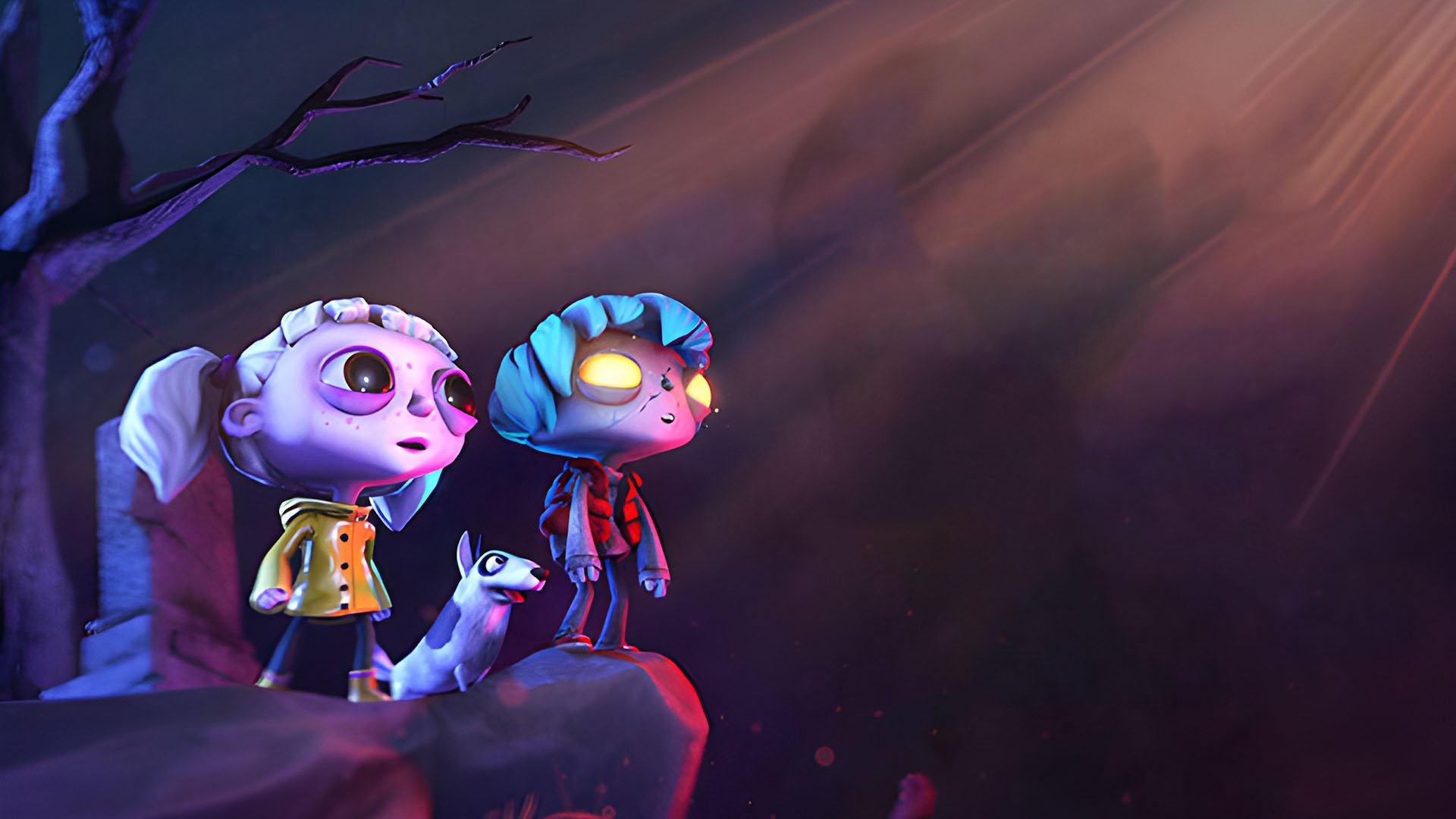
Gloomy Eyes is a singleplayer self-coop adventure where you control two characters: Gloomy, a zombie boy, and Nena, a living girl, and swap between them to solve environmental puzzles. Each character has a different set of strengths and weaknesses that shape how you move through the world and face obstacles.
The game’s levels are small, handcrafted dioramas that you can rotate and view from different angles, and that rotation is often needed to find hidden paths, secrets, or to understand how pieces fit together. Gloomy Eyes is not action-heavy: there is no traditional combat or leveling, and progression comes from solving puzzles, exploring the environment, and finding story moments rather than grinding for XP.

Gloomy is strong and sturdy, able to push heavy objects, throw stones to trigger mechanisms, and interact with heavy elements while moving among other zombies without drawing attention. Bright light hurts him, so avoiding or using shadows matters for his survival. Nena is agile, light, and nimble; she can climb, jump gaps, flip switches, and reach areas Gloomy cannot, but she cannot tolerate zombies.
Many puzzles are built around this contrast: you often use Gloomy’s strength to clear a path and then switch to Nena to reach a switch or climb somewhere, or you do the reverse. That back-and-forth teamwork, even though you play both roles yourself, is the mechanical heart of the game. Puzzles are generally light to medium in difficulty and follow logical steps, which keeps the flow calm and enjoyable instead of frustrating.
The visuals and art style are some of the game’s most great aspects. The look draws on a gothic fairy-tale mood that will remind many of Tim Burton’s work, with exaggerated, doll-like characters, big expressive eyes, and stylized proportions that are a bit creepy and a bit charming.
Lighting and shadow are used both as art and as game mechanics; light can guide Nena and harm Gloomy, so the way scenes are lit ties directly into both play and story. Animations and character expressions, though stylized, carry emotion and help tell the story without long dialogue.

However, Gloomy Eyes is fairly short, often running around four to five hours. Camera and navigation issues from the diorama style can also hide important elements and force you to rotate the world many times to find what to do next. In general, the replay value is limited once you finish the story unless you want to hunt collectibles or secrets.
In short, you will likely enjoy Gloomy Eyes if you care more about mood, art, and story than long hours or high challenge. If you like small puzzle-adventure games with strong visual style and a quiet emotional core, this game will feel special. Gloomy Eyes stands out because it follows a “less is more” idea: it does not try to be the biggest or most complex game, and instead focuses on mood, art, and storytelling.
The rotating diorama levels are rare among modern 3D worlds, and the mix of dark gothic tone with gentle, non-violent gameplay makes it a rare, intimate experience for players who want something artful and emotionally textured.
Review copy provided by the publisher